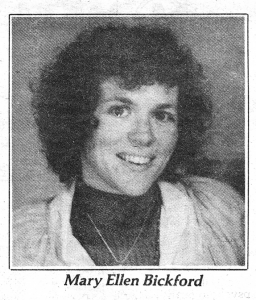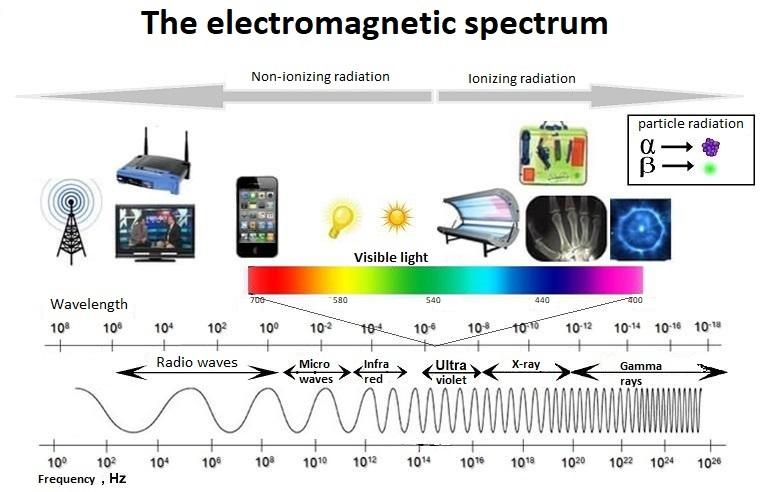Let in the Light:
Can Light Affect Your Health?
By Joan Voight, The Santa Rosa News Herald (1982)
In 1982, A Santa Rosa, California newspaper called The News Herald published a full-page article about the effects of light on health. The author had visited The Rainbow Light Show produced by Norman Miller and Mary Ellen Bickford’s Rainbow Research project and was impressed. Supplied with information from Mary Ellen and Norman, this important article soon appeared in print.

There is a woman in Santa Rosa who dresses in colors that she believes will aid her in her task that day. For dealing with business clients, for instance, she dons burgundy or blue. Children under detention in San Bernardino County are put in a small pink room when they become violent. They often fall asleep within 10 minutes. Baths of blue-violet light have replaced blood transfusions in treating certain premature infants.
The power of light is as common as a flickering fluorescent tube and as magical as an unreachable rainbow. We are all affected by the phenomenon of light and its offspring color, though we’re generally oblivious to it. Artists, photographers and designers know how lighting and color can intensify, beautify and set moods; but a growing minority of researchers gives light and color even more credit. They claim light can directly affect our health.
It’s a theory which has a legion of critics and may seem absurdly farfetched until you realize skin disorders like psoriasis are now being treated with light in the ultraviolet region when patients take a photosensitizing drug.
Ultraviolet light is also used in hospitals to clear up rickets and to help premature babies and infants with jaundice. Concentrated light, brighter than the sun, forms a laser that is used to cut, destroy, heal and stimulate human tissue to heal itself. And oddly, different colored lasers perform different jobs. Even acupuncturists are beginning to use lasers instead of needles.
Scientists and psychologists agree light can have a powerful influence, but that is about as far as the agreement goes. It is still mainly the periphery of established science that is conducting studies to show the healing powers of light and colors. And in the forefront of that research is the controversy over fluorescent lighting, the stuff that provides illumination for the majority of the working American public.
“It seems conclusive that light is the most important environmental input, after food, in controlling bodily function, states Richard Wurtman, a nutritionist at the Massachusetts Institute of Technology. He points to a variety of experiments that demonstrate how various colors affect blood pressure, pulse, and respiration rates, as well as brain activity. And he takes the reasoning a step further. Color studies are showing that our exposure to artificial light may have harmful effects of which we are not aware,” he states.
Not that the idea is new. For years there have been people who claim that artificial light is unhealthy, and there are office workers making the switch from incandescent or window light to fluorescent light who complain of headaches and a restless, out-of-sorts feeling.
As it turns out, light helps to regulate body chemistry, especially glandular activity, recent experiments demonstrate. Wurtman found that as light waves strike the eye, they trigger a response in the hypothalamus, which affects pituitary function and hormone production. If a wavelength is missing from a light source, some receptors in the eye fail to respond, provoking a hormonal imbalance. And indoor artificial lighting, especially regular fluorescent tubes, lacks many of the wavelengths found in the visible spectrum of sunlight. As we spend more time indoors, the argument concludes, our delicate system of biological responses to sunlight is disrupted, our “light diet” suffers.
Self-educated light authority John Ott has been preaching that message to deaf ears Since 1973, when he wrote his frequently challenged book, Health and Light. Using time-lapse photography, Ott found that when he removed certain wavelengths, particularly ultraviolet, there was a profound disruption of cell activity in rabbits, rats, and plants. For example, rats raised in pink fluorescent light developed sores, calcium deposits in heart tissues, and showed abnormal behavior.
In another experiment, Ott installed full-spectrum fluorescent lighting in a classroom of hyperactive children in Sarasota, Florida. He reported that after 60 days, the children’s level of agitation subsided considerably, replaced by a marked improvement in behavior and attentiveness.
Some experts, like Faber Birren, a well-respected color consultant for industry, maintain that color and full-spectrum lights are only psychologically helpful, setting a mood which is conducive to good health. But Harold Wohlfarth, a photobiologist at the University of Alberta, has conducted experiments which show that light and color had the “identical” impact on the blood pressure, pulse and respiration rates on two blind children as on seven students with normal sight. In the published study, the walls of the schoolroom were changed from orange and white to royal and light blue. An orange rug was replaced with a gray carpet. And the fluorescent lighting was replaced with full-spectrum sunlight-simulating lights. Independent observers noticed a definite change in behavior. However, when the room was returned to its original color design, blood pressure and pulse rates went back up and the children became rowdy once again, Wohlfarth said.
Helen Keller wrote that she knew color and light were not restricted to the sighted. “My soul sense… and the forces of association drives me to say that I know color. White is exalted and pure, green is exuberant, red suggests love, shame, or strength. The unity of the world demands that color be kept in it whether I have sight of it or not,” she wrote.
Full-Spectrum Lighting
Avid full-spectrum lighting fans locally are Norman Miller and Mary Ellen Bickford, directors of Rainbow Research, a center for color studies and multi-media shows in Santa Rosa. They point out that full spectrum is the closest artificial light to natural sunlight. They say it is easier to see under such lighting, and paperwork is less physiologically fatiguing under full-spectrum lights. “It really feels better.” they contend.
Renaissance Chiropractic and Nutrition Center on Yulupa Avenue installed full-spectrum lighting about one year ago, switching from standard white fluorescents. “I feel a big difference in a lot of subtle things,” states Marianne Jahangiri, who works in the clinic office all day. “These lights give me a feeling of wellbeing, I have less eyestrain, my throat doesn’t feel so dry. and I cough less. And of course, the plants love it.”
Chiropractor Iraj Jahangiri notes the new lights were “a bit more expensive, but in terms of benefits. I’ve found them well worth it. There is a definite difference: I feel less stressed and less tired at the end of the day. My patients who get headaches under their fluorescent lights at work notice the difference here right away. I am constantly getting comments about the good light here.” he states.
The basic premise may seem simple. Humans have cut themselves off significantly from the light in which they evolved for millions of years. Fluorescent bulbs emit a much more limited range of light than the sun and are particularly deficient in the ultraviolet and blue-green wavelengths, where the sun’s energy is the strongest. But there are plenty of people who will disagree that full-spectrum lighting is the answer to better health.
Says John Parrish, a doctor and researcher at Harvard Medical School, “I’ve never heard a good argument for deliberately including ultraviolet in our indoor lighting. Most evidence of benefits include reactions like happiness level, eye fatigue, school performance and so on. Many other factors could be responsible for these improvements,” he argues.
As for the claims that fluorescent light is imbalanced, Parrish states, “If you follow that logic, you would want every light source to be a solar stimulator; you’d be hot all the time. And if you read at your desk, you’d get sunburned.”
Most business owners in the lighting industry are also slow to ascribe any health benefits to full-spectrum lights. And most local lighting distributors maintain there is not enough clear evidence to show that fluorescent lights are lacking in health benefits, or that full-spectrum lighting will make an indoor worker feel better.
Salespeople at Builders Supply Lighting and Golden West Lights note that they sell a wide variety of fluorescent bulbs and claim the only advantage of bulbs with a wider spectrum is that colors are corrected, and glare is decreased.
States Bill Everest, owner of Marin Lighting, “We have lights which can be called full-spectrum, which are a little closer to sunlight, with a bluer, brighter tinge; but their main value is to make colors look truer. We would not state that these lights are any healthier. We don’t believe there are any significant studies to show one type of artificial lighting is better for you than another.” he states cautiously.

However, studies on the health effects of color and artificial light, called photobiology, are accelerating, and are just now starting to enter the mainstream of conventional science. And the more we learn about light, the more we can come to appreciate the fascinating ways color affects us. Next week the News Herald will explore how health professionals, institutions and some adventurous individuals use color to control health and behavior.

Simulated Sunlight Anyone?
If you are interested in giving full-spectrum lights a try, here is what you need to know. First, though some companies may label some of their lights full spectrum, the kind of lighting used in health-related experiments is the DuroTest light developed by John Ott, particularly the VitaLite model. Vita-Lite is the only patented sunlight-simulating fluorescent lamp, according to distributors.
Full-spectrum bulbs fit into standard fluorescent fixtures and will supply the same amount of workable lights as fluorescent bulbs, so you would replace a 40-watt fluorescent lamp with a 40-watt full-spectrum model. Consequently, there is no increased energy usage.
The rub is that full-spectrum bulbs cost considerably more. For example. a 48-inch, 40-watt soft. white fluorescent bulb suitable for homes and offices would run about $3.30 retail. A VitaLite of similar size and wattage would run about $8.90. But while the fluorescent bulb would last about two to three years, the full-spectrum light would last up to twice as long, say the Duro-Test people.
Since the bulbs are made differently, the light stays clear and brighter for a longer period of time than fluorescents which tend to turn yellow, according to local Duro-Test distributor, Marty Seevers. There is only one DuroTest distributor in a region, and Seevers has just taken over the Sonoma County area.
Also on the market are color-correcting fluorescents that provide a bluer light and make colors look more like they would in sunlight. However, there are no claims that these lights will make you feel better. The simple color-correction bulbs are made by a variety of manufacturers, and lighting merchants say their price and life span do not vary appreciably from standard fluorescent bulbs.
The Body Electric
In the exotic world of color healing, one method used to diagnose physical and mental ailments is the examination of an electromagnetic field of color, called an aura, which is believed to surround every living being.
The first scientific discovery of auras was made by a Soviet electrician, Semyon Kirilian, in 1939. Kirilian found that you could direct a high frequency electrical field through an object to be photographed onto a piece of unexposed photographic paper, and the electric field seems to cause the plant, animal, or person to radiate a sort of bioluminescence or “aura” onto the photo paper.
In the 1960s, Dr. Walter J. Kilner of St. Thomas’s Hospital in London developed a “dicyanin” screen, a lens painted with a coal-tar dye, to enable auras to be visible to the human eye. Using the Kilner screen and working within the ultraviolet range of light, the aura can be seen as an inner band outlining the body, about a quarter of an inch wide. A second band, about two to four inches wide, is clear, almost vaporous light; and beyond that is a third aura, misty and vague, about six inches across which extends away from the body. By studying the screen, a color healer can study the condition of the patient’s health, believe chromotherapists.
Researchers report their Kirlian electrophotographs and dicyanin screen viewings show that certain points on the human body radiate light flares more forcibly than the areas around them. University of California and Stanford University scientists have conducted experiments with the auras emanating from people’s fingertips, which substantiate the concept of electromagnetic light flares.
According to Kilner, the color of health is a bluish-gray area, tinged with yellow and red. A grayer, duller color is typical of a diseased body. Others have expanded on his conclusions. Some researchers say the bluer the aura the finer the intellect, while some use the shape of the flares to gather information.
One method of catching sight of an aura is to gaze at the sky through the blue dicyanin filter, then sit with your back to a window. Light in the room should be dim, and the subject should stand naked behind a neutral screen. Without a dicyanin screen, the eyes of the viewer can be sensitized to the violet light of the aura by staring at yellow paper beforehand.
Can Color Heal You?
If the purported powers of natural light sometimes seem amazing and magical, then the supposed impacts of colors sound downright incredible. Can certain colors make you behave differently, make you feel better and even heal you?
“Yes,” proclaims a growing number of believers. Though few of their conclusions are based on hardcore scientific study, the methods of the new color therapists do have a certain logic, as well as an uncanny success rate. For example, various California probation departments put their violent juveniles in a Pepto-Bismol pink cell to calm them down. Walls of the Sonoma County Jail are also painted differing hues of pink, with the darkest hue in the block reserved for the most hostile prisoners.
Evidence shows that pink paint works better than brute force, say the law enforcement authorities. In fact, several cities in the nation are experimenting with pink walls to stop graffiti, and there are even some football coaches experimenting with the passive color in their opponents’ locker rooms.
And in conservative London, England, the Blackfriars Bridge [in London] was repainted [green] in hopes of reducing the number of suicides. For years restaurants, doctors’ and dentists’ offices have been decorated in different colors in an experiment to make visitors feel comfortable and at ease.
For instance, some restaurant chains rely on a peach color to arouse hunger. Bright yellow and light coral are also deemed to be “appetizing” colors. In one documented case, a salad bar improved sales by almost 100 percent simply by trading in the white salad plates for pale green versions. In another, a fruit dealer who painted his walls orange to complement the colors of the fruit reported that sales boomed.
Traditional scientists may admit there is convincing evidence that color can affect human behavior, but that premise is as far as they’ll go on the color therapy bandwagon. Most maintain that all effects are purely psychological, a fairly obvious conclusion until you meet some color converts who believe color goes deeper than the mind.
Photo biologists and chromotherapists maintain that colors are never neutral. Most contend that color affects the body as well as the mind. Alexander Schauss, director of the American Institute for Biosocial Research, states that color has a direct physiological impact, He is convinced that the electromagnetic energy of color interacts in some unknown way with both the pituitary and pineal glands, and the hypothalamus located deep in the brain. His explanation is an extension of research which supports the health benefits of full spectrum lighting.
According to color therapists, a part of the electromagnetic spectrum contains energy, just as gamma rays, X-rays, radio and TV rays have energy. Colors are light at varying rates of wavelength or vibration. So, just as the wavelength of various colors differs, so the energy impact of different colors varies. Consequently, the theory holds, each color in the spectrum should have certain very different effects on us.
It is only one small step further, therapists contend, to assume that we can learn to manipulate those effects. Color therapist Mary Anderson points out the superficial psychological effects of color, “We are cheered by vivid colors, while drab colors give a dull feeling. Red warms us; the warmth of an open fire is unexcelled because along with the warmth, the sight of the burning coals affects us psychologically. Blue is a cold color, soothing to the eyes and mind alike. Green harmonizes us. As a mental stimulant, yellow is unbeaten; a good light-yellow wall in a room is a boon towards promoting brilliant conversation.”
It is not difficult for Anderson to take the leap into healing with color. She states that a person inclined to be depressed, slow in reaction, with no energy or appetite, needs to be exposed to red and orange rays of colors. However, a person who is impatient, choleric, overactive, with a high temperature should be exposed to blue-violet light to cool him.
Self-educated light researcher John Ott demonstrated in experiments that plant and animal cells behave differently when exposed to different waves, or colors, of light. Laboratory mice showed physical changes in the sexual habits and life span when restricted to certain colors of light rays, Ott revealed. Paradoxically, however, in one of Ott’s studies, an office that had tried to improve the atmosphere with pink-hued lights found the pink light had an opposite effect, causing irritability, dissatisfaction, and moodiness.
So, while passive pink walls work in jails, deep pink light over a long period of time apparently has a very unpacifying effect. Indeed, renowned New Age color therapist Corinne Heline warns against the overuse of color, pointing that too much red can turn someone violent and too much violet could foster an unrealistic “head in the clouds” semipermanent.
Although most of the non-traditional New Age color healers take their work very seriously, some local color-believers practice with color in a spirit of fun.
Mary Ellen Bickford, Rainbow Research director, lives out her color studies.
“My experiments with colors are sort of a game,” she says. “I’ll focus in on one color for about two weeks to see how it can help me. Red is one example. I’ll wear red, I’ll eat red foods like apples, tomatoes and beets; throughout the day I’ll pick out the red objects I run across and concentrate on them. All this seems to make me more active and energetic. When I’m feeling low, I’ll get into red.
“I’ll focus on yellow when I have a lot of thinking to do. I get out my yellow clothes, I eat bananas and squash, make tea in my yellow teapot each morning. When I need to be in touch with the masculine self inside me, I use blue, as it is the color of will, enhancing my ability to cut through obstacles. My favorite color, though, is violet. I wear that color for its high vibration, and it makes me feel spiritually connected.” She is convinced scientists will eventually get around to proving these special qualities of color.
For people like Bickford, there is indeed a strong spiritual aspect to the healing powers they ascribe to color. “I also use color for my good health in meditation or prayer,” she notes. “I breathe color into my energy centers.”
Color therapy enthusiast Anderson takes the connection between color and the body a step further. She believes in restoring the body’s physical imbalance through the application of beams of light. Heavily tied to this work is the phenomenon of auras.
Based on the theories of Hindu scientist D.P. Ghadiali, who published his research in 1933, chromotherapists treat several illnesses with color. They believe that for each organ and system of the body there is a particular color that stimulates, and another that inhibits, the work of that system or organ.
Therefore “one can apply the correct color which will balance the action of any organ or system that has become abnormal,” states Anderson. Ghadiali concludes the primary colors in chromotherapy are red, green and violet. In his treatise he explains, “the red ray is the color of construction, it maintains the number of red blood cells in the body and stimulates the liver. The violet ray activates the spleen, it is the color of destruction and helps the spleen destroy older red blood cells and produce white blood cells to combat bacteria. Green is the balancer of the body; it is the central body of the visible spectrum and balances the opposing actions of the liver and spleen through the medium of the pituitary.
And if all this sounds mighty peculiar to conventional health practitioners, the treatment sounds incredible. Color therapists say, for example, those with anemia, poor circulation and blood disorders should drink water “solarized” with the red rays of the sun focused through a special filter, and their bare upper bodies should be exposed to 30-minute baths of red light. The anemic patient is also advised to sit by an open window, relax and expel all the air from his lungs. He is then to breathe in the color of red visualized in his mind, to a certain count, and then exhale it to the same count.
This color-breathing, say therapists in all seriousness, is best done before or after breakfast or the evening meal. In addition, most healers advocate the eating of certain color-charged fruits and vegetables.
Chromotherapy is still a fledgling practice in Sonoma County; for the most part, it is only a field of study and those actually interested in receiving treatment must travel to San Francisco or Berkeley. Further information about the New Age theories on color and healing can be obtained through Rainbow Research in Santa Rosa, or from color healer Rishi Colbert through the Well Being Community Center in Sebastopol.
Rainbow Research is currently at the forefront of the spiritual and scientific exploration of color, hosting workshops, classes and multi-image shows blending color, light and music on a regular basis.
